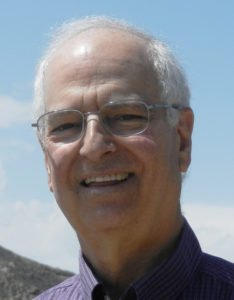James Bamburg, professor emeritus in the Department of Biochemistry and Molecular Biology at Colorado State University, was named a 2022 Fellow of the American Society for Cell Biology (ASCB).
“I view many of the current ASCB Fellows as my mentors and I am both honored and humbled by this recognition to join their ranks,” said Bamburg. “Although it is a recognition for me, it belongs to all the outstanding scientists that I have been fortunate to work with during my entire 51-year career at CSU.”
The ASCB is an international community of scientists who study cells, the building blocks of life. Fellows are elected by their peers in recognition of significant contributions to the field. 
“Bamburg’s prestigious, decades-long legacy of research on ADF/cofilin is groundbreaking in the world of cell biology and beyond,” said Simon Tavener, interim dean of the College of Natural Sciences. “His work is at the forefront of research on neurodegenerative diseases that result in dementia, and efforts to develop potential treatments. Bamburg is well deserving of this recognition.”
Research
Bamburg is known internationally as the ‘father of ADF/cofilin,’ a family of proteins he discovered in 1979. These proteins regulate actin, a component in the cell’s cytoskeleton. This controls cell motility – how cells move around the body – and is involved in everything from the spread of tumors through metastasis to the plasticity of dendritic spines in memory.
Bamburg’s publications are seminal to the field, with over 20,000 citations linking these proteins to brain dysfunctions (like stroke or dementia), ischemic kidney disease, and cancer.
Most recently, Bamburg’s lab identified connections between a cofilin rod pathology in neurons with synapse dysfunction, a key driver in Alzheimer’s disease. His lab has identified new compounds that can reverse this pathology.
“I think these compounds we’re working on, as potential therapeutics, are very likely to get into clinical trials,” said Bamburg.
He hopes to end his career with this development in medicine.
“Jim is a giant in the cell biology world,” said Jennifer DeLuca, one of last year’s Fellows. “His work has far-reaching implications.”
Education
In addition to his own work, Bamburg is a strong supporter of undergraduate research. In 2002, he proposed CSU’s first five-year combined B.S./M.S. degree in Biochemistry and Molecular Biology. The program was a success – today, he’s published more work with these students than any other faculty member in the department.
His contributions don’t stop there – he helped establish open access microscopy across campus in 2006 through the Microscope Imaging Network, and was a driving force for developing the undergraduate neuroscience B.S. degree in 2014. Bamburg’s contributions to education and research at CSU rival his contributions to cell biology.
“As I’ve observed Jim over the years, it’s clear that serving and empowering students is truly his passion,” said DeLuca.
As Bamburg wraps up his research career, his legacy at CSU and in his field will be relevant for years to come.